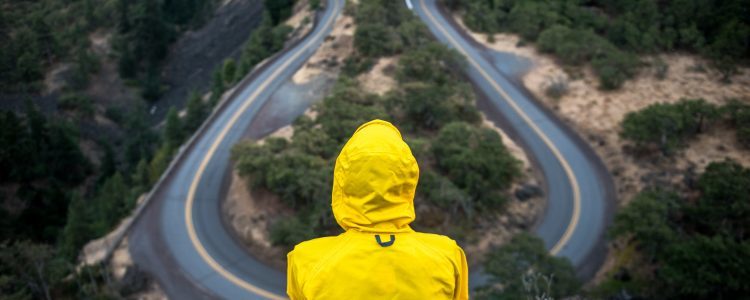Personally, I don’t pack a waterproof I take a Poncho like the Expedition, but then I love the versatility. Most outdoor shops offer a bewildering selection of waterproofs and it can often be difficult to understand which is the best for you. How do you judge? All will claim to be 100% waterproof, the days of the “shower proof “jacket have gone. Then there is the weight of the jacket and how packable it is. Then there is the ultimate buzz word “how Breathable”, which is the main topic I would like to address.
I am not a techie guy and I neither can nor want to blind you with science which would probably end with you just wanting the most expensive jacket out there.
In the beginning, all jackets where both very waterproof and extremely breathable (they didn’t make you sweat) they were made from cotton, wool or oiled cloth – Gabardines and oilskins. But a good one was expensive and they tended to be heavy and bulky, especially when the outer surface became wet. In fact many of the best jackets worked when the fibres of the jacket expanded when wet, so sealing off the elements.
Then came plastic. It was cheap highly effective at repelling water but could not breathe at all. Try wrapping yourself up in bin liners. You will sweat to death. In fact with the original PVC waterproofs, any form of exertion, trekking being a main one, the inside of the jacket could become so wet from condensation of body heat that people would swear their jackets where leaking. So a way had to be found between keeping water out and letting hot air escape. The answer was to perforate the fabric. If you where to look at a cross section you would see a conical shape with a small hole on the outer surface (too small to let in a droplet of water) with a larger hole on the inner surface (allowing the smaller steam particles to be drawn up the cone like a chimney) this will explain why, even if you have the best, most breathable jacket available, you will still feel very damp on your back and shoulders if you are wearing a day sack. You have formed an occlusion and there is nowhere for the hot air to go. It will also explain why if the jacket becomes very dirty on the outer surface the pours become clogged and again will reduce the breathability. In addition all these fabrics are treated on the outer surface to make water run off like water off a ducks back. When the jacket becomes older and water begins to sit on the surface or indeed if the rain is so heavy that it just cannot run of quick enough, then something called “wetting out” occurs. The water sitting on the outer surface will stop the jacket being breathable.
Phew……. So if you invest in a top notch jacket be prepared to clean it regularly and retreat the outer surface. Much like sleeping bags, natural fibres will always trump man made in the durability game.
The features to look out for when choosing a Waterproof are-
Pit Zips
These zips allow you to ventilate under the arms by opening up the waterproof fabric to allow air movement. Great if you’re in changeable conditions and need the versatility, or if you are getting hot while trekking.
Breathability
Is the jacket made from a good breathable fabric? Gortex is the gold standard but many reputable brands will have their own alternative that will perform very well.
Fabric
Is it made from Nylon or Polyester? Nylon resists abrasion very well.
Reinforcement
Look for extra reinforcement on the shoulders and elbows. Wear can be an issue in these areas, a reinforced jacket will last longer and perform better.
Hood
Is the hood well-fitting and adjustable? In severe weather a well-fitting hood is a Godsend.
Personally, I’m sticking with my waterproof poncho. The fact that it will cover me and my pack and will come down to my knees and I can use it as a ground sheet and hunker down in it if the weather gets really bad, plus because it’s so loose fitting air circulates freely. The down side is watch out if you get caught out in a blow. It can make you feel that you are about to take off!! Plus it’s not the most elegant when out in the town.
If you are a keen walker then getting the best jacket you can is a good investment and will add to your enjoyment even under extreme conditions. It’s also important to remember waterproof trousers , preferably ones that you can put on without removing your boots, and or gaiters.
Trekking is a wonderful experience and one that will be so much more enjoyable if you have got yourself covered.


No Comments
Be the first to start a conversation